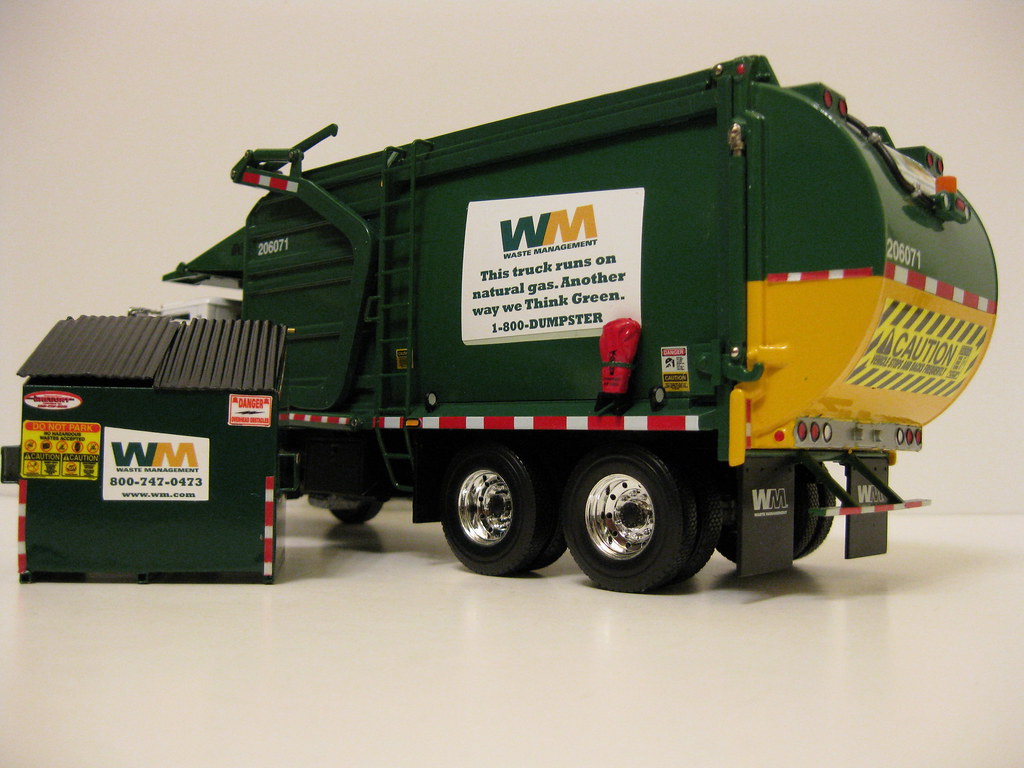

Illustrations above and below show the many cylinder designs required to operate and control refuse vehicles. Also, commercial waste tends to be filled with dense, mixed-media trash such as metal or wood, where residential garbage collected is primarily soft household waste. Front-load garbage trucks are often larger than some of the rear load counterparts, and with so much material to compress, they experience reduced compaction rate.

Front-load trucks primarily service commercial customers, looking much like mastodons as their giant “tusks” lift dumpsters over their back to empty them into their open hopper. The large truck crams more garbage more effectively, now carrying over 39,000 lb each haul, vastly reducing dump frequency and thereby increasing productivity.Īlthough the body capacity and compaction rate vary, so too does the method of filling the body. Instead of 800 lb per cubic yard, think more like 1,300 lb per cube. A capacity over 30 cubic yards in these larger trucks combined with more compaction force enables each one of those cubic yards to hold more raw waste. bore cylinders can achieve maximum force over 80 tons combined. At a nominal working pressure of 3,000 psi, those two 6 in. Larger, more expensive trucks employ larger sweep and compactor actuators, sometimes up to dual 6-in. With just a 6,400 lb load capacity, a smaller truck needs to dump more frequently. With lighter-duty hydraulics, these smaller machines may only compact those eight cubic yards to a density of 800 lb each. An economically priced garbage truck may offer a capacity of only about eight cubic yards. With more powerful compaction from heavy-duty hydraulics, a garbage truck reduces the frequency in which it exits its route to dump the load. A higher compaction rate provides more compacted material per cubic yard, improving productivity.

It is dictated by a combination of body strength, hydraulic cylinder force and the surface area of the compactor. Compaction rate is a measurement of mass per volume of space, rather than a time component. Compaction rate refers to the density of trash per cubic yard of capacity after the material is compacted. Hydraulics provide maximum productivity for garbage trucks, not only regarding cycle time, but the quantity and compaction rate of the garbage itself. Telescopic cylinders, like this 3-stage design from RAM Industries, are commonly used in the waste management industry, particularly for pushing or dumping waste out. However, newer machines use either sequence valves or electronics to complete the action with one push of a lever or button. Older trucks required an operator’s thoughtful lever-operated directional control valve actuation to sweep and compact the trash. The sweep blade and compactor action both use hydraulic cylinders. It goes without saying these machines are heavily hydraulic powered, and these trucks indeed take advantage of hydraulic power density. The garbage is tossed into the gaping rear end and periodically compacted with what looks like a giant Hungry Hippo. The most common garbage truck (sometimes call a refuse truck), and the one most people think of, is the rear loader. Garbage trucks follow the regional recipe, so depending on municipal preferences, recycling requirements and the efforts of the salespersons offering products into that region, each locale may use a different machine. Have you ever visited another state, province or country and seen a local piece of machinery seemingly designed on another planet? Dump trucks, concrete mixers and snowplows are often designed for and from regional preferences.

And unless you’re the type of fluid power aficionado to be reading this article anyway, fewer people know how prolific hydraulics are in the waste management process. But few of us understand the path trash takes from our curb to either its place of reincarnation or place of final rest. Sure, everyone sees a garbage truck occasionally, and you may even leave your city workers a Christmas present every winter. Waste management is an industry considered best operating in the wings, leaving the main stage orderly and immaculate. Hydraulic cylinders and valves are common on refuse machinery, as they bring the rugged power for controlling, lifting, filling, compacting and dumping in the many types of refuse vehicles used.īy Josh Cosford, Contributing Editor Image courtesy of Advance Disposal


 0 kommentar(er)
0 kommentar(er)
